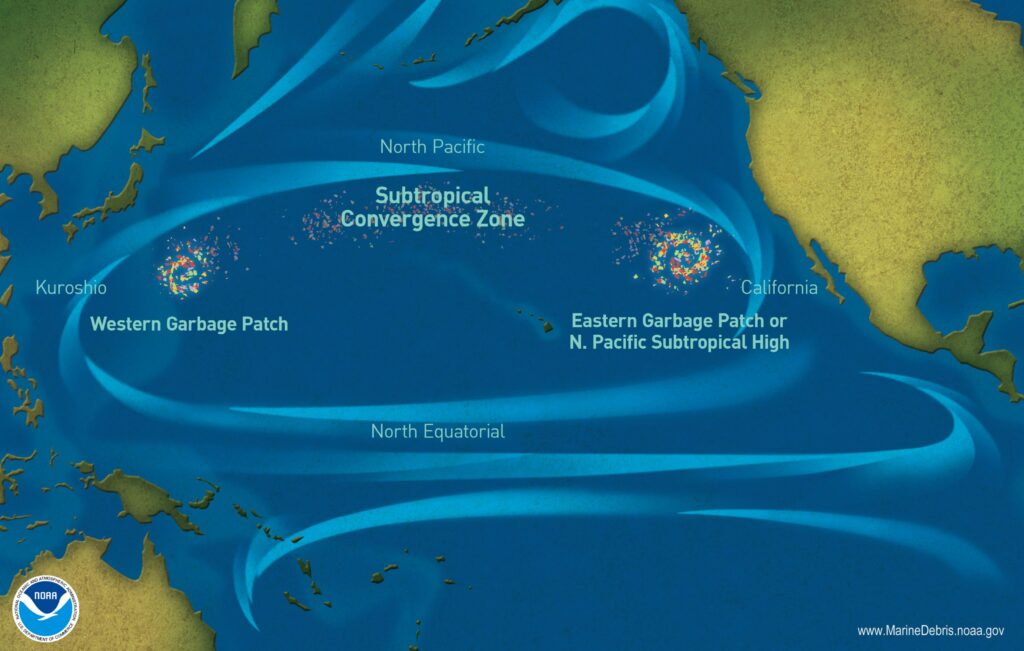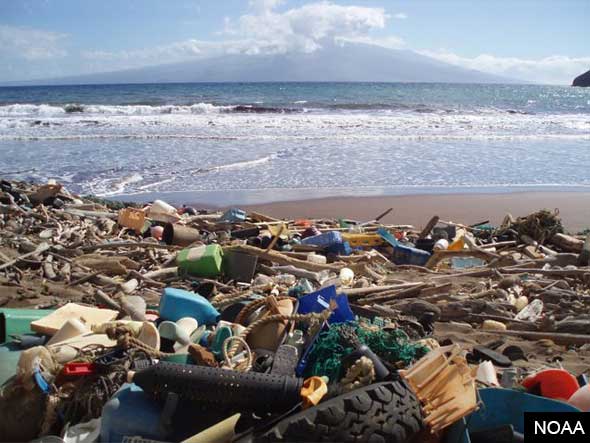(Columbia Climate School)
There are currently 75 to 199 million tons of plastic polluting our oceans, according to the World Economic Forum. This is a result of humans recycling only nine percent of plastic waste and dumping 10 million tons of it into the seas each year.
If we continue on this path, the annual flow of plastic into the ocean could triple by 2040 as plastic production continues to increase. Marine plastic pollution may be costing the world economy trillions of dollars every year because it affects fisheries, coastlines, tourism, marine life, and the food we eat.
Some ocean plastic ends up in one of five major gyres, systems of ocean currents that corral marine garbage into their vortexes.

The Great Pacific Garbage Patch, the largest gyre, located between Hawaii and California, covers 1.6 million square kilometers, an area twice as big as Texas. It’s estimated that it contains 1.8 trillion pieces of plastic, weighing almost 90,000 tons. While there are many identifiable floating items in the gyre—macroplastics such as cigarette butts, plastic bags, food containers, laundry baskets, plastic bottles, medical waste, fishing gear, and more—most of the plastic is the size of pepper flakes or smaller, broken down by the sun and waves over the years.
Despite the fact that the majority of large plastic pieces are spread out across the vastness of the oceans and the rest may be too small to collect, there are a number of organizations attempting to clean up the oceans.
Written by BY Renee Cho 10 13, 2022.

